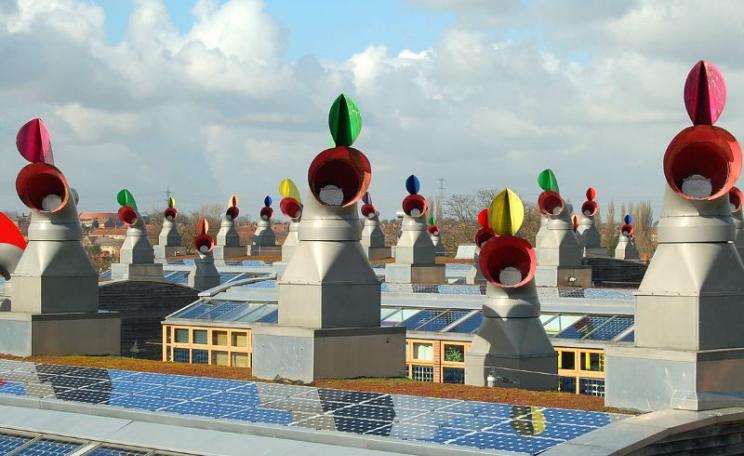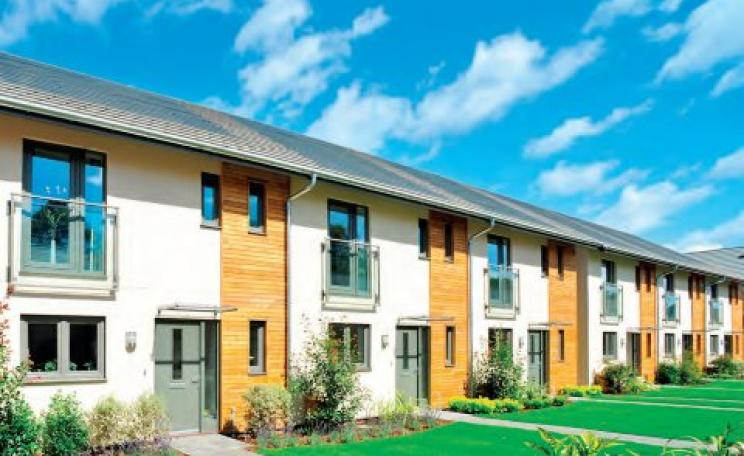What we need to realise is that we simply can't continue to build and buy homes that aren't sympathetic to the future of our planet.
It has become a common misconception amongst housebuilders that being ‘green' means compromising on luxury and style, but in reality there needn't be a trade-off between the two.
New build projects present the perfect opportunity to work with a blank canvas to create a home that balances liveability, style and energy efficiency.
Brickfields is an exemplar of this, effectively demonstrating that an 8,000 sq. ft. property with six bedrooms, six bathrooms, a gym, sauna, swimming pool, cinema and bar, can still meet Code 5 for Sustainable Homes regulations through careful, inventive planning and design.
The challenge of incorporating various sustainable technologies seamlessly into elegant design provides an opportunity for innovation and creativity. And this can be as simple as adopting passive house thinking.
Ensuring the home is orientated to make the most of natural light, incorporate floor-to-ceiling windows to allow daylight to flood the internal space, which consequently reduces the need for heating too.
An abundance of sustainable technologies
Developers and housebuilders can install ground source heat pumps, a technology that extracts heat from the ground and transfers it into under floor heating systems, to further improve energy efficiency without impacting the space within the home.
Solar panelling is also essential. While some consider this technology unsightly, when mounted onto a flat roof, solar panels can be discreet whilst still generating a significant portion of a home's energy.
Underground water tanks which collect harvested rainwater are another sustainable feature which can be incorporated from the outset. Water tanks set in the property's foundations will not affect the exterior or take up valuable internal space, whilst the reuse of harvested water in the home will reduce dependence on external sources.
If developers and housebuilders employ such technologies to offset a home's carbon usage, there's no reason why inside, the home can't maintain the high quality interior of a lavish home. A life of luxury can be sustainable.
There is the hope that in shaking off the associations of ugly and uninspiring, eco homes like Brickfields will become increasing popular with developers and buyers alike.
Thinking beyond profitability
What we need to realise is that we simply can't continue to build and buy homes that aren't sympathetic to the future of our planet. This is especially so when building homes that are already considered to be of a luxury living standard.
While there's no disputing there are additional costs incurred when implementing sustainable technologies, these can be substituted in for other less environmentally friendly options that would have previously been specified, resulting in only a small increase in build cost overall.
This is an investment that goes beyond profitability. It is an investment in our environment that will see benefits for years to come.
What we need to realise is that we simply can't continue to build and buy homes that aren't sympathetic to the future of our planet.
Economically speaking, it makes much more sense for developers to implement these sustainable features at the early stages, rather than as an afterthought. As this becomes common practice, the cheaper the materials and technologies will become.
From a developers' resell perspective, the appeal of a home with built-in sustainability will too reach far beyond the environmentally conscious. Code 5 properties can offer savings of over 85% on energy bills, ensuring sustainable credentials give homes a financial edge in today's competitive housing market.
As housing prices continue to rise, homeowners will be looking to get more for their money and how better to demonstrate this than with a home that offers utility savings year after year.
Looking to the future
Right now the Government simply isn't doing enough to promote greener living. It seemed things were heading in the right direction with the Green Deal initiative and Zero Carbon homes 2016 target, but recent changes to the Infrastructure Bill would suggest that we're taking two steps back.
Making small developers exempt and giving larger developers the opportunity to bail out of the zero carbon homes objective by throwing money into the green charity pot, simply undermines the overall cause. We need to see more of a commitment from our government to environmental protection policies, especially when it comes to sustainable house building.
Eco homes can and should be extremely liveable, maintaining a balance between practicality, style and sustainability. This message needs to be better communicated. We need to build a greater awareness of sustainable measures that can be incorporated into buildings' designs and offer incentives, rather than loop-holes, for developers.
Ultimately, what is required is a change in attitude to sustainable development. With the housing market thriving as it is, too much attention is being put on increasing properties' monetary values and not enough is given to increasing its environmental worth.
Both developers and buyers need to think long-term if we are stay on a path towards a greener, more sustainable Britain.
Ryan Kohn is director of green design and building company, Living in Space. He has over 8 years of development experience in the industry having previously worked as a Land Acquisition Manager for a Hadley Property Group. His previous project experience has a combined GDV total over £230m.
Ryan has a passion for sustainable design and encourages the use of environmentally conscious products, keen to show that they not only add distinction and durability to a property, but also vastly improves the quality of the home environment.
Living In Space is an interior design and build firm that covers everything from interior design, architecture, project management, build, and soft furnishing procurement and styling for private residences across London.
Brickfields is currently on the market for £5.5m. For more information, please visit www.living-inspace.co.uk or call 020 7722 3131.




